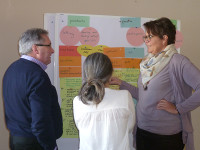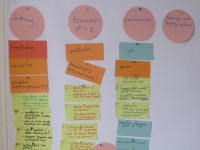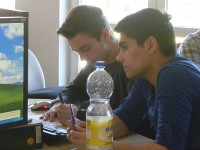Foundation study
This foundation study was prepared by building on specific country reports, international comparative essays and statistical data. The study contains the following chapters:
- The labour market and educational opportunities of young people
- Enterprises and economic environment
- Specific operational features of enterprises
- Supporting enterprises and business start-ups
- Social capital – personal and social sources of power
The sources of the background data of the study are as follows:
- Education and Training Monitor – Country reports 2013, 2014 (EC)
- Education at a Glance Monitor – Country reports 2013, 2014 (OECD)
- A Partial and Fragile Recovery. Annual Report on European SMEs 2013/2014 (EC)
- Enterprise and Industry. SBA Country Fact Sheets, 2013, 2014 (EC)
- The global competitiveness report 2014-2015. World Economic Forum
- Legatum Prosperity Index, 2014
The foundation study shows that in the subject under examination we can find similarities and differences alike concerning the specific features of the partner countries.
Unemployment of young people is higher in every partner country than in the entire population. We can however find significant differences between the four countries. German young people can be seen as more fortunate from this viewpoint than the same age groups in the three other countries.
As a consequence of unemployment and the lack of educational possibilities, NEET young people seem to share common features, independently from the location where they live. They have a low level of self-esteem and self-confidence. They seldom have a clear vision of their future, their goals often lack realistic dimensions and they rarely plan their progression.
We can find essential differences within the European NEET group when considering their qualifications. While most of the British and German NEET young people have a low level of education, the Polish group contains those with a fairly high proportion of final secondary certificates, which relates to the phenomenon that Poland produces a relatively low level of early school leavers. If we compare this data with that of Hungarian NEET young people, we find that the proportion of the NEET group having a low educational level, final secondary certificates and diplomas, is almost at the same level.
When examining the opportunity for prosperity provided by the social and economic systems of the four countries, we can find a clean-cut boundary line dividing the four partner countries into two. Broadly speaking, Germany and Great Britain – having stronger economies and more democratic traditions – offer better opportunities for those NEET groups which can mobilize their own capabilities, as compared with the same groups in Hungary and Poland. This statement holds true despite the fact that the level of information technology in the four countries – although in different degrees – exceeds the international level.
The differences of the environmental conditions influence some characteristic features of interpersonal relations. Various international data shows that people in Britain and Germany are much more willing to trust other people than those in Poland and Hungary. Poles represent the average, while Hungarians trust other people half as much as the average. The network of family ties functions in the same way in all the four countries. Charity however works much better in the United Kingdom and Germany as compared with Poland and Hungary. Far greater numbers of British and German people are willing to offer money for charitable purposes and the same holds true for regular volunteering.
Similarities and differences regarding the qualifications, life-circumstances and socio-economic environment of young people define the nature of realistic support they will need. This relationship explains why and how the development of training programmes should focus on the following items: what is the future vision of NEET young people in different regions of Europe in terms of personal possibilities and hopes? Development guidelines have already recognized this need. Adapting to local conditions is also supported within the programme. When developing the modules, the partners should respond to their own country’s unique features and are encouraged to select about 20% of the content of the joint programme to meet these specific requirements.
2015. 03. 18.









